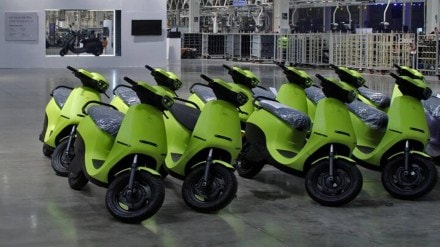Ola Electric shareholders have approved a special resolution via postal ballot to raise up to ₹1,500 crore through a securities issuance. The approval comes at a critical time for the electric two-wheeler manufacturer, which is battling weak sales, shrinking market share, and significant cash burn that has pushed operating cash flows into negative territory.
According to the company’s exchange filing on Friday, 99.83% of votes across promoters, public institutions, and non-institutional shareholders supported the fundraising proposal.
In October, Ola Electric Mobility’s board cleared the ₹1,500-crore fundraise through a mix of equity shares and convertible securities—its first major equity issuance since the ₹5,500-crore public issue in August 2024.
Earlier this week, Bloomberg reported that the SoftBank-backed company has approached multiple investors but is struggling to secure financing for its ₹1,500-crore equity round due to deteriorating sales and financial health. The report also noted that investors are reluctant to back its ₹1,700-crore debt plan approved in May, citing weakening business performance.
Financial strain and market share erosion
Ola Electric’s consolidated revenue fell 43% to ₹690 crore in the second quarter, while vehicle deliveries dropped 47% year-on-year to 52,666 units. The sluggish first half prompted the company to sharply cut its full-year sales forecast to about 220,000 units, down from the earlier 325,000–375,000, and reduce its consolidated revenue guidance for FY26 to ₹3,000–3,200 crore from ₹4,200–4,700 crore.
The company’s market share in the e-scooter segment declined to 11.5% in October, from a market-leading 30% a year earlier, as legacy OEMs and new-age competitors such as TVS Motor, Bajaj Auto, and Ather Energy strengthened their positions.
Analyst warnings and the bet on Ola Shakti (BEES)
The Ola Group reported negative operating cash flow of ₹343 crore for the six months ended September 30, compared with ₹2,391 crore as of March 31—“primarily on account of continued operating losses and lower-than expected growth in sales volume”. In their limited review, statutory auditors advised “the Group to consider mitigating circumstances, in order to support its operations and meet its continuing obligations”.
“The company’s situation is already showing visible strain,” analysts Rishi Vora and Apurva Desai of Kotak Securities wrote in their latest report. “Without acknowledging and addressing core issues (volumes), the fragility will rapidly escalate into a full-blown crisis.” Kotak, which has a sell rating on the stock, estimates debt obligations of ₹550 crore for the year ending March 2026 and ₹620 crore for the following year.
At its AGM earlier this year, Ola Electric received shareholder approval to revise the end-use of IPO proceeds and extend the timeline for deployment. Of the ₹5,275 crore in net IPO proceeds, ₹2,301 crore remained unutilised as of September 30, with ₹1,869 crore placed in fixed deposits and ₹432 crore held in monitoring accounts.
Ola is also betting on its newly launched battery energy storage system (BEES) vertical, Ola Shakti, to drive future growth. The company expects this business to deliver ₹100 crore in revenue in Q4FY26 and ₹1,000–1,200 crore in FY27, with gross margins of 40–50%. “By FY27, our company will have a broader revenue base, higher structural margins, and stronger cash conversion,” Chairman and Founder Bhavish Aggarwal said in his Q2FY26 letter to shareholders.
Shares of Ola Electric were trading flat at ₹41.40 on the NSE, down 46% from its listing price and 60% from its 52-week high of ₹102.50 in December 2024.
